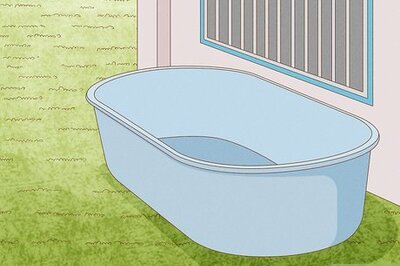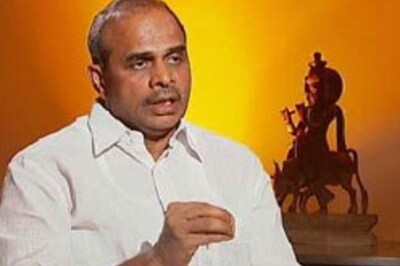
views
London: Former champions Williams hope to play a much bigger part in this year's Formula One title race thanks to the smallest gearbox they have ever built.
Technical director Sam Michael said in an interview before the team showed off their new car in its racing livery on Thursday that Williams had put an unprecedented amount of research and development into the FW33.
"We know it's not easy but we hope that this car will take us a step closer to where the leaders are," he said.
"As a team we are more ambitious than we have ever been, there's bits and pieces on the car that we know are good but we also realize that it's a difficult task out there," added the Australian.
Williams have not won a race since 2004 and last celebrated a championship back in 1997. Last season they finished sixth overall.
However, the early signs, for a Cosworth-powered team backed by new Venezuelan oil money and with that country's rookie Pastor Maldonado in the cockpit, have been encouraging.
Brazilian Rubens Barrichello, Formula One's most experienced driver, was fastest in testing at Spain's Jerez circuit this month and the car has attracted attention for its sharply truncated engine cover and extreme-angled rear driveshafts.
Michael said only four teams had stood out in testing for having evident innovations that could make a real difference when it came to going racing, and the Williams gearbox was one of them.
FOUR THINGS
"There's the Williams gearbox, there's the Red Bull exhaust system and the way it blows the diffuser, there's the Renault exhaust system and the way it blows the front of the diffuser and there's the Toro Rosso double floor," he said.
"Those four things are the ones that stand out. "People have got nice cars and they've pushed and tweaked and done things differently but the other things aren't differentiators. Those four things I can see creating a difference during the year."
Michael said Williams had crunched all the numbers and run simulations of their rivals' developments through their wind tunnel.
"We know what the various numbers say on each of them. So we are busy deciding out of the other three things we don't have on the car which ones we will pursue," he added.
Gearbox development is time-consuming and Williams have been working on theirs, which is mounted far lower and packaged very tightly, since early last year -meaning that the chances of anyone copying them are remote.
"The Red Bull exhaust is the easiest one to copy," said Michael.
"But the Toro Rosso double floor and even the Renault exhaust is still just bodywork. It might take you a couple of months to do it, but you can do it during a season. Whereas a gearbox is a completely different kettle of fish really."
Michael said there had been no issues with it in testing, and reliability looked good - even more important this season with gearboxes now having to last five successive races rather than four.
Testing niggles had been minor, easy to fix ultimately but costly in terms of time on the track.
In Jerez, a bleed screw working loose from the rear wing actuator became lodged between the top of the gearbox and final drive wheel. It took six and a half hours to sort out, even if the solution was just to put the screw on a different way.
The FW33 is slightly longer than last year's car, mainly as a result of housing the new KERS (kinetic energy recovery system) in the survival cell below the fuel tank.
Michael was pleasantly surprised with the amount of innovation around, despite a tightening of the regulations and the banning of last year's double-diffusers and 'F-ducts'.
"I thought with such restrictive rules, the cars would start to become boring and Formula One might become boring," he said.
"But its actually had the opposite effect in that people are pushing harder and harder to find advantages in smaller things. I think that's been quite good for Formula One.
"It's surprising. You look at all the cars up and down the grid and they are all pretty different, aren't they? You wouldn't have predicted that with what's happening with the regulations."
The season starts in Australia on March 27.




















Comments
0 comment